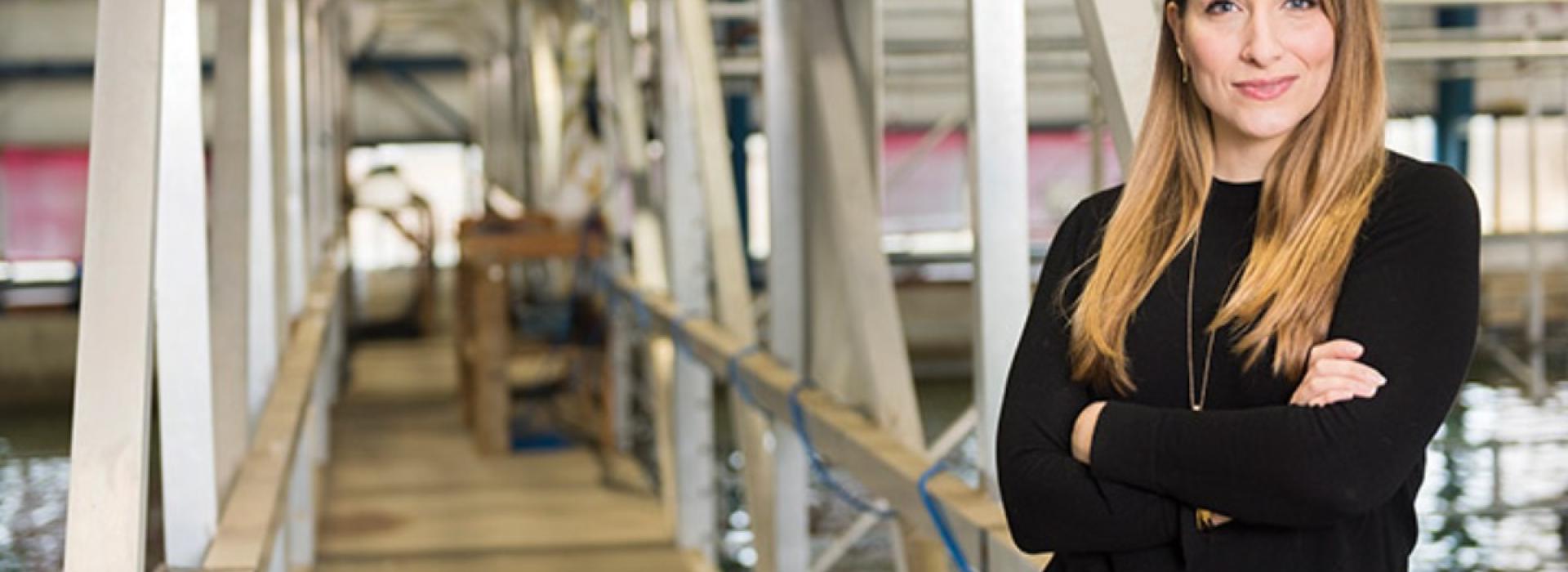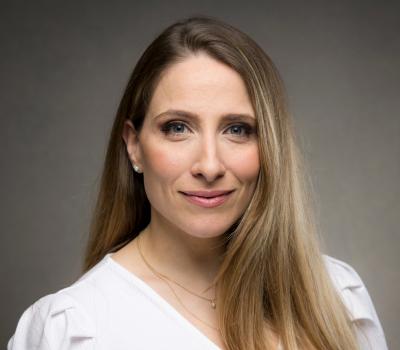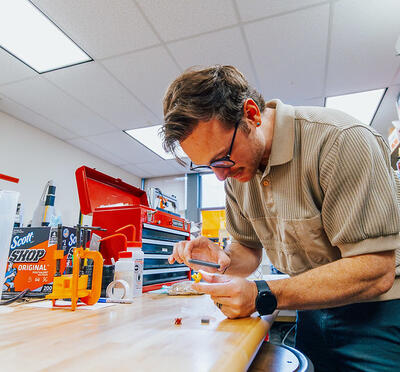Throughout the day, a relentless parade of waves marches across the world’s oceans before crashing onto far-flung shores. Just in the United States, tapping this unlimited source of power could represent 2.64 trillion kilowatt-hours in theoretical annual energy potential — equivalent to two-thirds of the nation’s electricity generation — according to a 2018 estimate from the Department of Energy. Working to maximize this potential is Bryony DuPont, associate professor of mechanical engineering at Oregon State University. With funding primarily from the DOE, DuPont and her team develop computer simulations to help wave energy converter manufacturers design devices that wring the most electricity out of every wave.
Before DuPont came to Oregon State, her research focused on design algorithms for wind energy systems. Near the end of her doctoral work at Carnegie Mellon University, she interned at the National Renewable Energy Laboratory wind farm in Colorado. While she was there, she crossed paths with a handful of engineers from Oregon State who are looking to tap another source of renewable energy: the ocean.
“When I saw a clear path to take my work in wind and apply it to wave energy, I jumped at the chance,” DuPont said. “And with the global reputation of the Pacific Marine Energy Center, it was an easy decision to come to Oregon State.” PMEC, formerly the Northwest National Marine Renewable Energy Center, is a collaboration across Oregon State, the University of Washington, and the University of Alaska Fairbanks to investigate the technical, environmental, and social dimensions of marine energy.
A significant aspect of PMEC’s mission is testing full-sized wave energy converters that can plug into onshore power grids. But well before testing such devices, or even building prototypes, comes an extensive design optimization process.
“As you start designing these novel devices, there’s a really wide design space,” DuPont said. “And while people come up with really creative solutions, it’s not clear which are best.”
The physics and math of ocean waves are well known, but computationally simulating fluid flow at large scales is still a huge challenge, because the simulations take so long to run. Every time a design parameter — e.g., hull length or propeller curvature — is modified, the simulation has to be run again. So, what starts as a computationally expensive simulation becomes enormously time consuming when assessing thousands of design iterations.
“We’re pretty limited by our computational capabilities, but we’ve found really ingenious ways to skirt around this, including models that are a bit more skeletal in some strategic ways,” DuPont said. The fidelity of these stripped-down models may not be quite as high, and they may introduce a subtle amount of error, but they run significantly faster and can provide informative results applicable to developers.
Beyond just performance, DuPont’s models attempt to optimize other considerations such as cost, reliability, manufacturing, and deployment.
“We’re just now getting into those properties because they’re much harder to quantify,” DuPont said. “If you tell an optimization algorithm to design the most powerful wave energy converter, it’s likely going to pick the biggest one. But, if you can factor in production cost, the cost to tow it out to sea, and the reliability of components, that usually gives you a much more realistic result.”
Manufacturability is also a concern. While an algorithm can spit out a design that maximizes power generation and reliability while minimizing cost, the design could call for a hull shape that’s simply too complex for many manufacturers. Ocean deployment can also be overlooked in early device design. “There have been projects entirely built and tested in wave tanks, then brought out onto the ocean and it’s like, ‘Oh no, what now?’” said graduate student Ali Trueworthy. “Cabling and mooring, for example, have historically been left for the end for someone else to figure out, and a lot of the infrastructure just isn’t there yet.”
Finally, wave dynamics can vary considerably across locations. To account for this, DuPont is currently investigating three different wave energy converter archetypes in eight different spots around the globe to assess the ideal match between archetype and location.
In addition to the DOE’s interest in grid-connected wave energy converters, more recently the agency has been supporting the development of smaller wave energy converters to power myriad offshore applications, including underwater autonomous vehicles; aquaculture farms; and buoys that measure wave, wind, and other ecological data. Trueworthy recently led a multidisciplinary team of students from around the country past the first round of a DOE competition called “Waves to Water” with a wave energy converter meant to power offshore desalination plants.
And like a wave that crests, troughs, and crests again, DuPont’s research has recently cycled back to wind energy. She’s a co-investigator on a DOE-funded project headed by Barbara Simpson, assistant professor of civil engineering at Oregon State, to develop hybrid simulations for offshore wind energy converters, which are essentially wind turbines attached to floating platforms. The plan is to build scaled-down versions of the platforms to test at the wave lab, then model the wind turbine dynamics and feed that into the physical platforms via a cable actuator system. DuPont’s role will be developing the computational model of the turbine that runs fast enough to test the system in real time. “The energy is out there, just waiting to be harnessed,” DuPont said. “We want to help the DOE and our industry partners capture as much of it as they can.”
MOMENTUM Issue Archives
Questions: editor@engr.oregonstate.edu




